How to Host a Local Pickleball Tournament: A Guide to Planning, Promotion, and Prizes
Turning a Community Game Into a Local Event
Pickleball has become more than just a casual pastime—it’s a social movement, an athletic outlet, and a competitive scene with national reach. But not every meaningful pickleball moment happens on the pro tour. Some of the most memorable matches take place in small communities, on local courts, where players compete for bragging rights, a trophy, or simply the joy of organized play.
Hosting a local pickleball tournament can be a powerful way to bring people together, raise funds for a cause, promote the sport, or give seasoned players a structured challenge. But it takes more than a few paddles and a sign-up sheet to create a successful event. From format and facilities to marketing and medals, every detail contributes to the experience.
Here’s how to do it right—from concept to closing ceremony.
Step 1: Define Your Tournament’s Purpose and Audience
Before booking courts or creating flyers, decide what kind of event you're running. Is it a:
Competitive tournament for rated players?
Community event for casual or mixed-skill participants?
Fundraiser with a focus on entertainment and outreach?
Club showcase or seasonal celebration?
Your goal will inform everything from registration fees and format to prize structure and promotion.
Also consider your target skill levels and age groups. Will it be open to all? Divided by ratings (e.g., 3.0, 3.5, 4.0+)? Or structured by age brackets?
Step 2: Secure a Suitable Venue
Court access is the backbone of the tournament. Find a location that can accommodate your expected number of players and provide the necessary infrastructure.
Key considerations:
Number of courts: More courts allow for more teams and a faster schedule.
Court surface and quality: Consistency is important, especially in competitive events.
Lighting: Essential for indoor tournaments or late-day play.
Restrooms, seating, shade, and parking: These comfort factors matter.
Public parks, YMCA centers, recreation facilities, and private clubs are all common hosts. Be sure to book well in advance, especially during peak pickleball seasons.
Step 3: Choose a Format That Fits
Tournament format determines not just the schedule, but the tone of the event.
Popular options:
Round Robin: Every team plays every other team. Ideal for smaller groups and ensures equal play time.
Double Elimination: Teams must lose twice to be eliminated. More competitive but requires detailed bracket management.
Pool Play + Playoffs: Teams are divided into pools, then top teams advance to knockout rounds.
Timed Matches: Set a time limit for each match to keep the day on schedule, especially in social or large-field tournaments.
Also decide on match scoring:
First to 11? To 15? Two out of three games? Balance inclusivity with competitiveness. The best format keeps players engaged without exhausting them.
Step 4: Set Up Registration and Rules
Create a clear registration process:
Use online forms or services like PickleballTournaments.com, Eventbrite, or Google Forms.
Set deadlines and fee structures (e.g., early-bird pricing, partner discounts).
Require participant info: name, skill level, partner name (or need a partner), contact information.
Establish house rules:
Will players self-officiate or will you provide referees?
What ball will be used (e.g., Dura Fast 40, Franklin X)?
Will you follow USA Pickleball official rules or modify for time/play constraints?
Publish a tournament handbook or info sheet and distribute it in advance.
Step 5: Promote Effectively
No event succeeds without visibility. Promotion should begin at least 4–6 weeks before the event, using a multi-channel approach.
Ideas to spread the word:
Share flyers and posters at local courts, rec centers, and gyms.
Post on social media platforms—especially in local Facebook groups and pickleball communities.
Email local clubs or instructors to encourage group signups.
Partner with local businesses for sponsorship, visibility, or prize donations.
Consider local press or community event calendars.
Highlight key selling points: low entry cost, quality courts, competitive structure, social aspect, or charity component.
Step 6: Organize Equipment, Staff, and Scheduling
A tournament isn’t just players and paddles. You'll need:
Balls: Choose a consistent brand and provide backups.
Score sheets or digital tracking: Keep brackets updated visibly.
Paddle racks or timing systems: For managing open play or side courts.
Volunteers: For check-in, court assignments, hydration, and emergencies.
First aid kits, extra water, towels, or sunscreen.
Create a detailed event schedule, including:
Check-in times.
Warm-up sessions.
Match start times.
Breaks and final rounds.
Awards or closing remarks.
Flexibility is key—plan for delays, weather shifts (if outdoors), and no-shows.
Step 7: Plan Prizes, Awards, and Recognition
Players love a little hardware. Offer:
Medals or trophies for division winners.
Raffle prizes or giveaways from sponsors.
Best sportsmanship or “most improved” awards for community flair.
For non-competitive events, focus on fun: branded water bottles, shirts, paddle grips, or gift cards from local businesses.
A thoughtful award ceremony—even if small—gives players closure and a reason to return next year.
Step 8: Follow Up After the Event
The tournament may end, but your community-building doesn’t have to.
Share photos and results online or via email.
Ask for participant feedback through a short survey.
Thank volunteers, sponsors, and players publicly.
Begin gathering interest for the next event.
A successful first tournament often leads to annual series, club growth, or new local leagues.
Conclusion: Build It Right, and They Will Rally
Hosting a local pickleball tournament is both a logistical challenge and a rewarding opportunity. When done thoughtfully, it strengthens local connections, elevates community skill levels, and introduces players to the joy of structured play.
With clear planning, good communication, and an emphasis on player experience, your tournament can be more than just a bracket—it can be a celebration of the sport’s spirit: inclusive, competitive, and always a little bit addictive.
